Success Advice
9 Daily Routines & Rituals Of Highly Successful People

Many of us think successful people do strange rituals to reach their success.
The truth is that they follow simple routines. They wake up and stick to a game plan. They find freedom in their routine while average people see routine as imprisoning.
To put it into perspective here are the routines and daily rituals of some highly successful people.
The Daily Routines & Rituals of The Highly Successful
1. Maya Angelou (Author)
 Maya Angelou would get up around 5:30 and grab a cup of coffee with her husband. She could only do her work in a hotel or motel room. She would keep a face basin, dictionary, bottle of sherry, and a bible with her.
Maya Angelou would get up around 5:30 and grab a cup of coffee with her husband. She could only do her work in a hotel or motel room. She would keep a face basin, dictionary, bottle of sherry, and a bible with her.
“If the work is going badly, I stay until 12:30. If it’s going well, I’ll stay as long as it’s going well.”
When she arrived home she would go over what she had written. Then she would shower, prepare dinner to unwind by the time her husband would get home.
After their dinner she would read what she wrote to her husband without expecting comments.
2. Benjamin Franklin (Inventor)
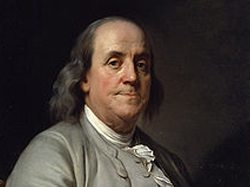 Benjamin Franklin had a strict schedule. He made time for all that was important to him. All at specific times of the day for him.
Benjamin Franklin had a strict schedule. He made time for all that was important to him. All at specific times of the day for him.
His famous question for every day was What good shall I do this day?
He would wake, wash up, eat breakfast then work from 8-12. He would dine with friends and look over his accounts then work for a couple more hours.
He would review his accomplishment for the day and retire. He also adopted the practice of daily air baths. Instead of taking a cold shower, which he felt shocked his body too much, he would stand naked and bath in the cold air.
I rise early almost every morning, and sit in my chamber without any clothes whatever, half an hour or an hour, according to the season, either reading or writing. This practice is not in the least painful, but on the contrary, agreeable; and if I return to bed afterwards, before I dress myself, as sometimes happens, I make a supplement to my night’s rest, of one or two hours of the most pleasing sleep that can be imagined.
I’m not always the best sleeper, so I’m tempted to try this and see if I too can have some of “the most pleasing sleep that can be imagined”!
3. Jack Dorsey (CEO Square & Founder of Twitter)
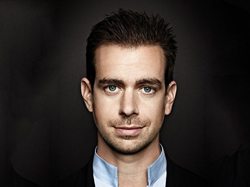 This guy is a machine. When he was running both companies he would dedicate 8 hours a day to both!
This guy is a machine. When he was running both companies he would dedicate 8 hours a day to both!
The only way to do this is to be very disciplined and very practiced – Jack Dorsey
To deal with distractions of the week he created a weekly schedule he would stick to everyday so he knew what he was working on.
Monday: Management and running the company Tuesday: Product Wednesday: Marketing and communications, growth Thursday: Developers and partnerships Friday: Company culture and recruiting
4. Winston Churchill (Former Prime Minister of the United Kingdom)
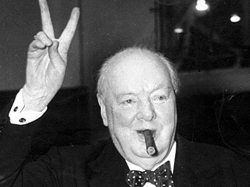 Winston had a “modern day routine” that many people would love to have.
Winston had a “modern day routine” that many people would love to have.
He woke up at 7am and would stay in bed until 11. He would catch up on local news, eat his breakfast, and speak with his secretaries. He would then bathe, walk outside, the start work with whisky and soda.
For late lunch he would eat with family and friends. At 5 he would take a nap for a couple hours, bathe again and get ready for dinner.
Dinner was considered the highlight of his day, with much socializing, drinking, and smoking that sometimes went past midnight. After his guests left, he would then work for another hour or so before heading to bed.
5. Stephen King (Author)
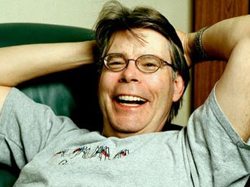 When asked about his schedule the legendary writer said:
When asked about his schedule the legendary writer said:
“I have a glass of water or a cup of tea. There’s a certain time I sit down, from 8:00 to 8:30, somewhere within that half hour every morning,” he explained. “I have my vitamin pill and my music, sit in the same seat, and the papers are all arranged in the same places. The cumulative purpose of doing these things the same way every day seems to be a way of saying to the mind, you’re going to be dreaming soon.”
6. Beethoven (Music Composer)
 The famous composer would wake at dawn, have a 60 bean cup of coffee. He would sit at his desk and work until 3:00 pm.
The famous composer would wake at dawn, have a 60 bean cup of coffee. He would sit at his desk and work until 3:00 pm.
He would then take small break during his days. He would then take a walk after midday lunch. He would keep a pencil and music paper with him incase he got some inspiration.
He would visit taverns in the evening and would go out to watch stage plays or meet with friends.
He would rarely work on music in the evening and would go to bed by 10 pm at the latest.
7. Barack Obama (U.S. President)
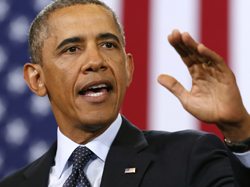 Barack starts his day at 6:45 am with a work out and then has breakfast with his family. He starts his work day at 9 am in morning. he handles all the issues that a president must handle. Lobbyist, Bills, reform, global peace treaties, you know the norm. His day ends at 6pm.
Barack starts his day at 6:45 am with a work out and then has breakfast with his family. He starts his work day at 9 am in morning. he handles all the issues that a president must handle. Lobbyist, Bills, reform, global peace treaties, you know the norm. His day ends at 6pm.
Obama has dinner with his wife and daughters to reflect. Of course he has a lot of routines during the day which is top secret. But you see how the normal routine of the beginning and end of his days are.
8. Evan Williams (Twitter, Blogger, Medium Founder)
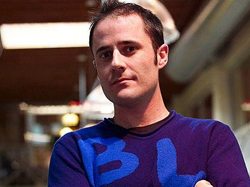 Evan Williams, The founder of Blogger, Twitter, and Medium is a machine that works all day right? He actually doesn’t.
Evan Williams, The founder of Blogger, Twitter, and Medium is a machine that works all day right? He actually doesn’t.
Evan Williams makes sure to take a break mid day, to go to the gym. He found out that he was more productive in the morning so he uses that time to get important work done then.
My focus is usually great first thing in the morning, so going to the gym first is a trade-off of very productive time. Instead, I’ve started going mid-morning or late afternoon (especially on days I work late).
9. Ernest Hemingway (Author)
 Hemingway would work as the sun rose until he got all his thoughts out. Unlike most writers who write a lot during the day, he would only write in the morning.
Hemingway would work as the sun rose until he got all his thoughts out. Unlike most writers who write a lot during the day, he would only write in the morning.
He would then hold his thoughts in his head for the remainder of the day, anticipating the next morning where he could get all the of them on paper.
Conclusion
So as you can see. The routines of the people listed about aren’t anything too crazy, beside Ben’s “Air Bath”. They found what worked for them and stuck to it for the span of their professional careers and lives.
What is your routine? Please share it with us in the comments section below.
Did You Know
How Skilled Migrants Are Building Successful Careers After Moving Countries
Behind every successful skilled migrant career is a mix of resilience, strategy, and navigating systems built for locals.

Moving to a new country for work is exciting, but it can also be unnerving. Skilled migrants leave behind familiar systems, networks, and support to pursue better job opportunities and a better future for their families. (more…)
Life
10 Research-Backed Steps to Create Real Change This New Year
This New Year could finally be the one where you break old patterns and create real, lasting change.

Every New Year, we make plans and set goals, but often repeat old patterns. (more…)
Change Your Mindset
The Silent Skill That Makes People Respect You Instantly
What truly earns respect and why most people go about it the wrong way

Everybody craves respect but not everyone earns it. Some people believe that a title, years of experience, or a position of authority automatically entitles them to respect. (more…)
Entrepreneurs
The Essential Skills Every Entrepreneur Needs In 2026
Success in the digital age isn’t about luck. It’s about mastering the skills that separate dreamers from doers.

When I was 22 years old, I started my first side hustle as a ghostwriter. (more…)
-

 Business4 weeks ago
Business4 weeks agoWhy Your E-Commerce Fulfilment Is Probably Broken (And How to Fix It)
-

 Shift Your Mindset4 weeks ago
Shift Your Mindset4 weeks ago11 E’s That Define Every Great Leader And Why Most People Miss Them
-

 Did You Know3 weeks ago
Did You Know3 weeks agoThe Success Patterns You Inherited (And Didn’t Notice)
-

 Entrepreneurs2 weeks ago
Entrepreneurs2 weeks agoThe Essential Skills Every Entrepreneur Needs In 2026
-

 Business3 weeks ago
Business3 weeks agoThe Hidden Money Pit in Your Operations (and How to Use It)
-

 Change Your Mindset2 weeks ago
Change Your Mindset2 weeks agoHow to Turn Your Mind Into Your Greatest Asset (Instead of Your Enemy)
-

 Change Your Mindset2 weeks ago
Change Your Mindset2 weeks agoThe Silent Skill That Makes People Respect You Instantly
-

 Life1 week ago
Life1 week ago10 Research-Backed Steps to Create Real Change This New Year













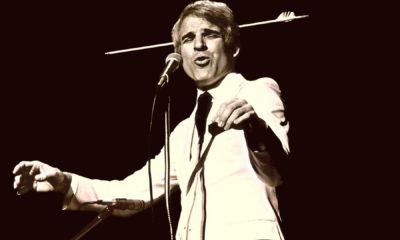













13 Comments